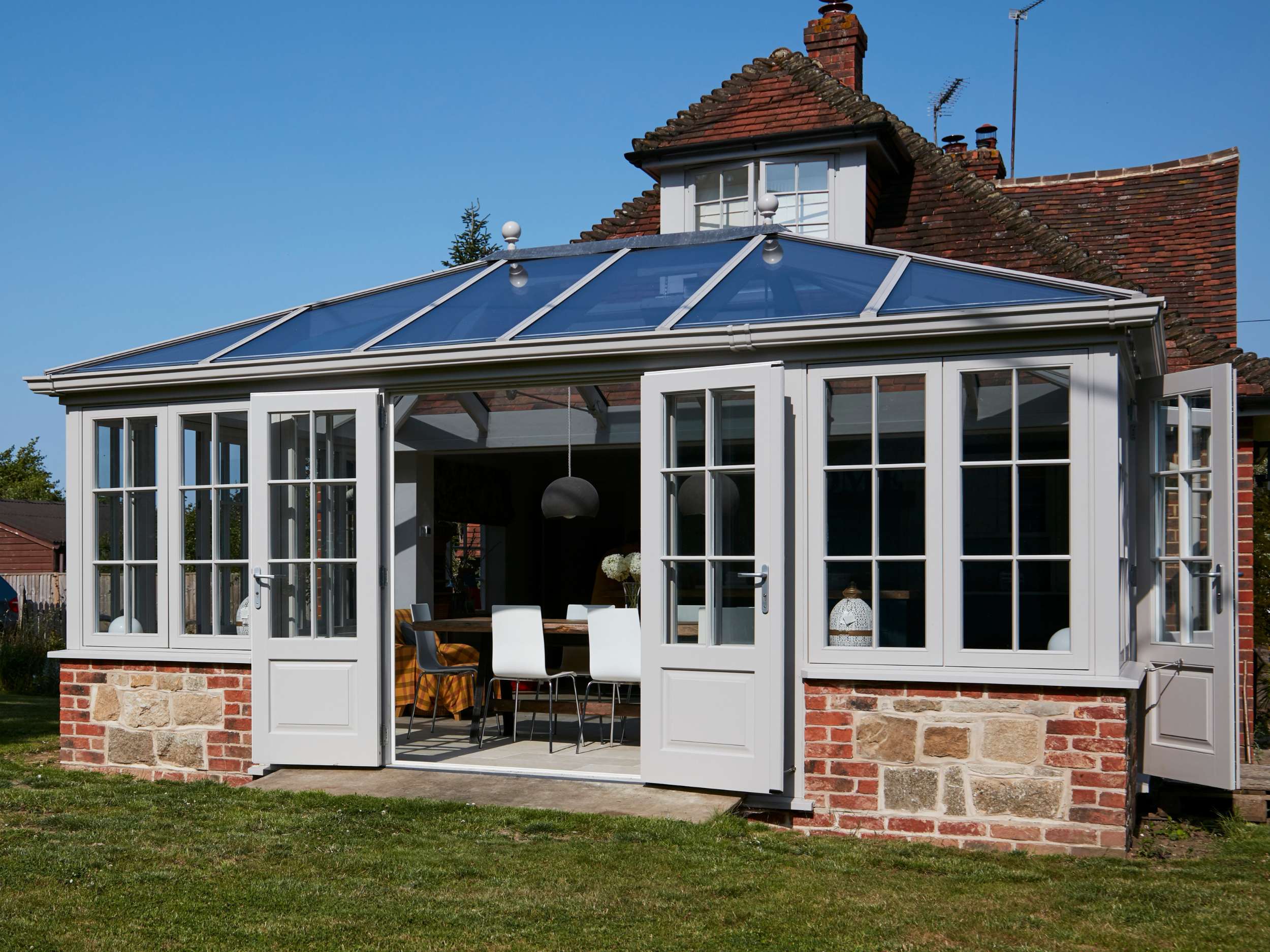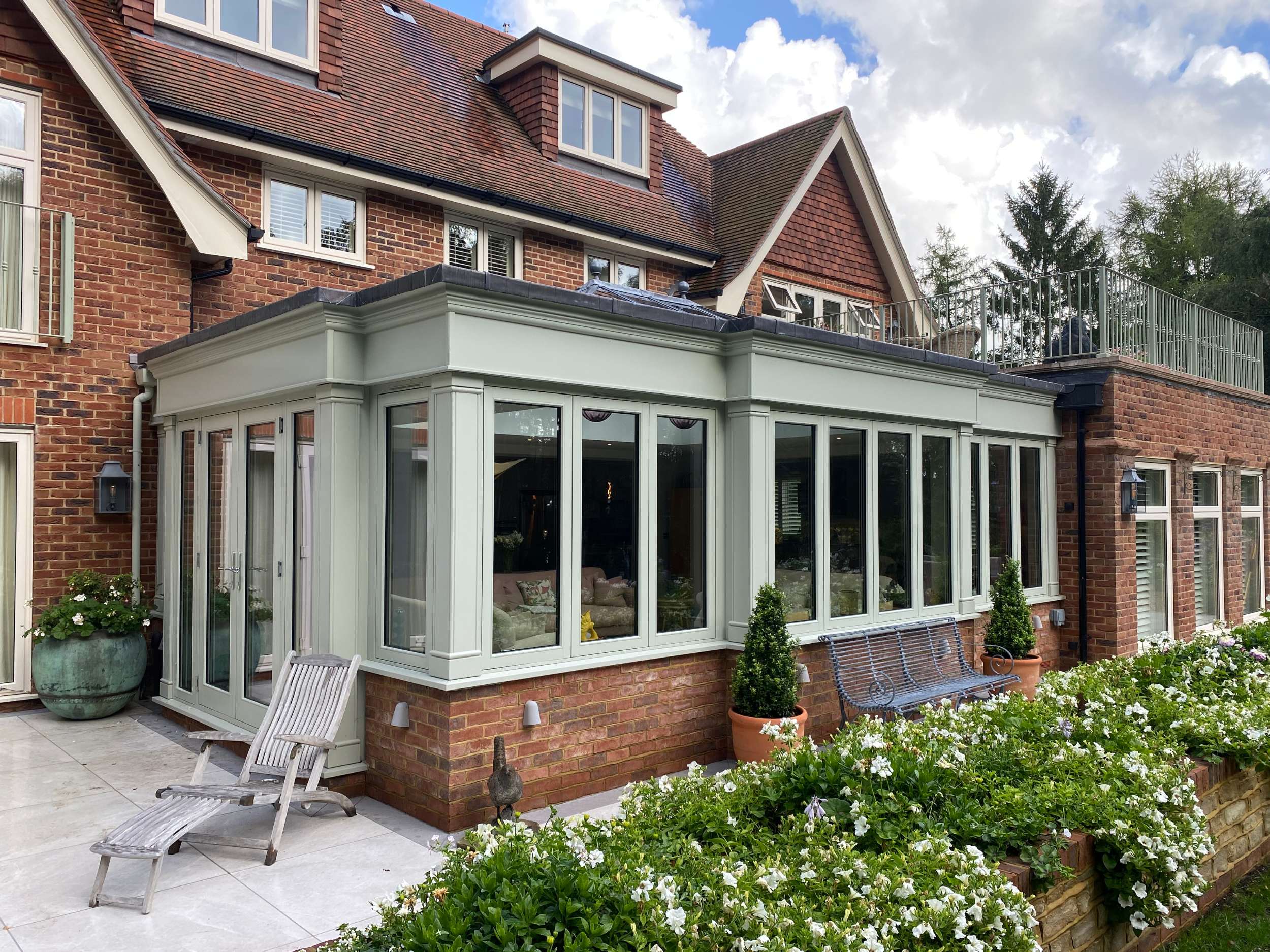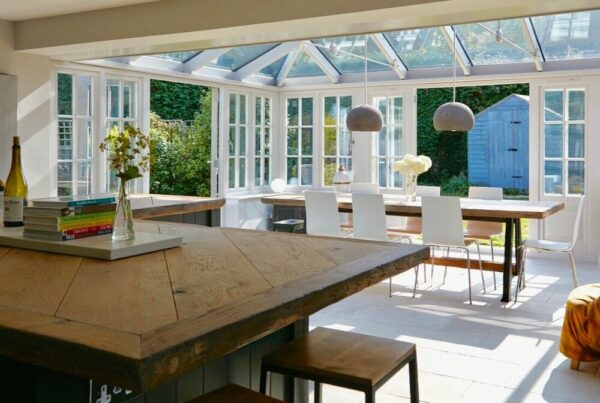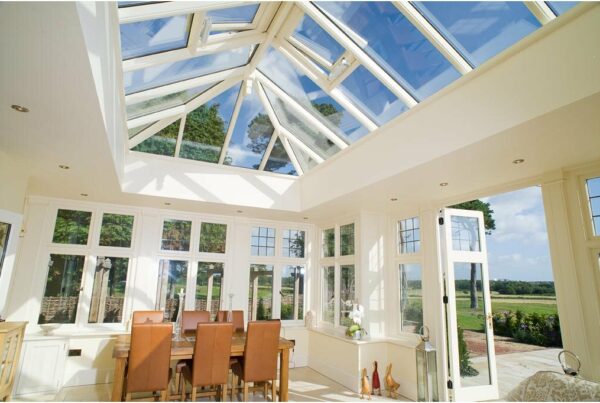The most asked Question!
What is the difference between an Orangery and a Conservatory?
One of the things we are most regularly asked here at English Garden Rooms is, What is the difference between an Orangery and a Conservatory? So we thought we’d put together some information for you……
Conservatories are a very prominent form of extension, used extensively in the ‘80s and ‘90s, found in uPVC, aluminium or Hardwood and offering a cost effective way of creating additional space in your home. Many Conservatories of that era had the reputation of too hot in Summer and too cold in Winter and therefore were only really used in Spring and Autumn.
Sadly Conservatories gained a poor reputation, somewhat unfairly, as a well-constructed Conservatory, with modern solar control glazing solutions, proper ventilation and heating, can offer a beautiful addition to any home and a room that can be used throughout the year.
An Orangery normally has less than 75% glass in the roof and this is typically in the form of a lantern roof set in an insulated, flat, ‘warm roof’. An Orangery is typically constructed in brick, hardwood, aluminium or uPVC and has glazing all round and French Doors or Bifold Doors leading out to the garden.
Orangeries, of course, are not a new invention. First constructed in Europe in the 17th Century. They gained popularity in the 18th and 19th Century, used to house fruits like, Oranges, lemons, pomegranate and bananas. Since the fruits struggled to survive the harsh European winters, orangeries were invented to protect and grow them. The high cost of glass made Orangeries somewhat of a status symbol and a demonstration of wealth and luxury.


So what are the main differences between an Orangery over a Conservatory?
The main difference between the two rooms is the ability of the designer to ensure that the room is fully usable all year round – this is much more easily achieved with a partially solid warm roof, containing insulation, in conjunction with a glazed lantern, than with the fully glazed roof of a Conservatory.
An Orangery will often also feature dwarf walls rather than fully glazed walls. The dwarf walls comply with current building regulations and are fully insulated and ensure that u-values are easily met. This helps keep the room cool in Summer and warm in Winter.
One of the biggest benefits of both Conservatories and Orangeries is providing a light and airy extension, allowing natural light to filter back into the existing house, creating continuity between the home and the garden beyond.
In summary, both an Orangery and a Conservatory, properly designed and installed, will provide a great and stylish addition to your home that can be enjoyed all year round, whatever the weather.
To explore how we can work with you to ensure you get the Orangery or Conservatory that you want, contact us on 01730 815690 or via our contact page



